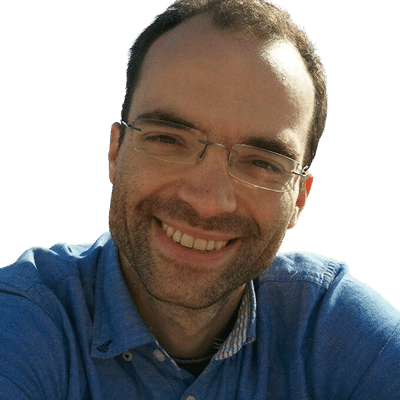Sage’s Continuous Innovation Program
Fred Figueiredo, Continous Innovation Catalyst at Sage

How do you rally colleagues to adopt an innovation mindset and pursue transformation courageously?

This video is available for members of Innov8rs Community and with the Digital Companion to The Innovator's Handbook 2024.
Would you like access?
Upgrade to dive deeper with the Digital Companion, giving you access to 80+ videos plus additional resources and content. Click here.
Are you a member of Innov8rs Community? This video is available in your content library.
Already purchased? Click here to loginMultinational software company Sage created a continuous innovation program to empower colleagues, partners, and customers to innovate.
Sage’s continuous innovation program evolved from a community movement to a strategic business transformative function. Initially, the innovation team team conducted over 32 interviews with colleagues from various regions, levels, and functions to gain a deep understanding of the business. They also utilized an event called the “big conversation,” where every Sage colleague had the opportunity to discuss their thoughts on the company’s culture and desired changes.
They discovered that colleagues believed in the company’s ability to innovate but felt that innovation was often limited to slide presentations or discrete events like hackathons. These insights helped uncover areas where they needed to focus and work on improving the day-to-day integration of innovation.
The team conducted several minimum viable product (MVP) tests to validate their hypotheses with customers and the problem and opportunity statements. They organized an event with 110 people to transition from business agility to continuous innovation, leveraging the experience of creating a community of agility. Within six weeks, they had 44 members join the community and received 150 comments. They created newsletters to engage and keep champions, passionate individuals who help nurture the community. It was crucial to find dedicated people to collaborate in nurturing the community, particularly within a large corporate structure of 13,000 employees.
To address concerns about Sage’s ability to experiment, they collaborated with the CTO and launched the training program “experimentation mindset.” However, the training’s progress was interrupted by the COVID-19 pandemic, requiring them to pivot and find ways to keep the program alive remotely. Despite the challenges, the program’s growth has been remarkably successful. It has seen 10x growth, and successfully reached over 2,600 colleagues without a budget or executive support.
When designing solutions, understanding both the problem and opportunity spaces is important. The three key areas Sage identified for exploration revolved around enabling the company to survive and thrive in a complex market, leading the market with concepts like SAGE clouds, and overcoming difficulties in creating innovation from within and becoming an iconic company. Their approach to this large-scale change involved seeking expertise in change management before moving into brainstorming and ideation.
The innovation team views their programs as business models, considering how they generate value, the cost structure, and unique value proposition. They initially asked for zero budget, prioritizing traction over funding in the beginning. However, realizing the need for scaling a large-scale change across a business with over 10,000 people, they eventually asked for a budget of 400k to support the implementation, including hiring additional staff. Previous attempts by others who had asked for budget without showing traction failed and led to the exit of associated employees. Their team was ready to work without a budget, not realizing that it was an expectation.
Establishing a relationship with Sage’s training department early on was crucial to the program’s success. They recognized the importance of this collaboration for their success. As they ventured into the training space, their “Next Innovation Growth” initiative became a role model for training at Sage. The leaders from the learning and development (L&D) department were impressed with their work and invited them to redesign L&D with them.
The team discovered that traditional training methods are often ineffective, and that experience and community are better tools for effective learning. They demonstrated it through traction and sponsorship, which led to the support needed to shape the training model. They are now planning to move part of their team into the L&D department to transform it from within rather than relying on external resources.
Innovation should be integrated into day-to-day operations, influencing how people think, problem-solve, collaborate, design, and develop. They acknowledged that the impact may not be immediately significant in the short term but believe that it will eventually come to fruition in the long term. Building networks and trust is crucial to creating an environment where distractions are minimized and the ability to deliver innovation is enhanced.
Measuring cultural change in corporate functions, especially those related to HR, can be challenging. The team partnered heavily with the HR function and utilized their metrics, systems, and voices to assess the cultural impact. They brought in their Chief People Officer as one of their sponsors to strengthen their credibility. While the energy created by their initiatives was felt across the business, the impact has been difficult to measure. However, they now recognize the need to focus on delivering tangible results and are shifting their focus towards metrics such as validating ideas, generating revenue, and tracking the progress of ideas in the pipeline.

